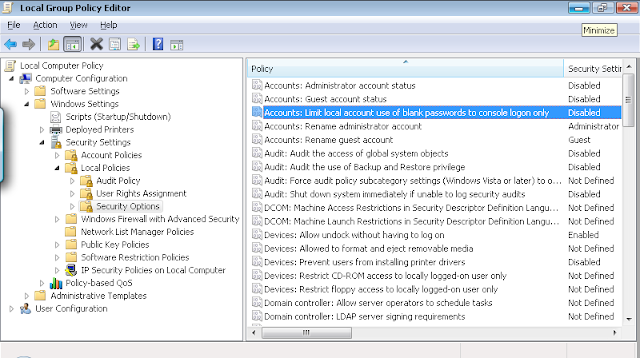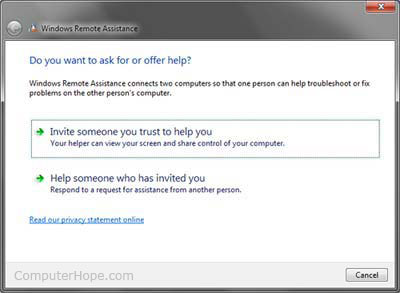


#VISTA REMOTE ASSISTANT WINDOWS#
In Windows XP, you could e-mail an invitation to someone, or you could save the invitation to a file and give it to the recipient some other way.

There is one very important difference though. This particular part of the process probably seems very similar to the Windows XP version at first glance. At this point, the person who is asking for help would see a screen asking if they want to use e-mail to send an invitation, or if they would like to save the invitation as a file. If the person who is running Remote Assistance is the one who needs help, they would select the Invite Someone You Trust To Help You option. Upon launching Remote Assistance, you will see a screen giving you the choice of either inviting someone to help you or offering to help someone, as shown in Figure A.įigure A: Upon launching Remote Assistance, you will see a screen giving you the choice of either inviting someone to help you or offering to help someone You can access Remote Assistance by clicking the Start button and selecting All Programs | Maintenance | Remote Assistance.

In Vista, Remote Assistance has been made into a stand alone application. As you may recall, in Windows XP, Remote Assistance was part of the Help and Support Center. Therefore, if your organization’s help desk depends on Remote Assistance, then you will probably want to make sure that the help desk staff are the first ones upgraded to Windows Vista.Įstablishing a Remote Assistance session through Windows XP is simple. Since the Windows XP version didn’t support this feature, someone who is using Vista to assist someone running Windows XP can pause the session, but the person who is running Windows XP will not be notified that the session has been paused.Ī more important issue is that a person who is running Windows XP will not be able to offer assistance to someone who is running Windows Vista. One issue is that Vista’s version of Remote Assistance supports pausing a session. The two versions are mostly compatible, but there are a few minor issues (including the verbal communications issue that I just mentioned). Most organizations probably aren’t going to switch all of their users to Vista overnight, so you might be wondering about whether or not the Vista version of Remote Assistance is compatible with the Windows XP version. This brings up an interesting point about compatibility. The verbal communications feature has been removed from the Windows Vista version of Remote Assistance in order to conserve bandwidth. In the Windows XP version of Remote Assistance, it was possible to verbally communicate with the person that you were helping. In doing so however, one feature was removed. As such, the Windows Vista version of Remote Assistance has been re-engineered to use less bandwidth. The Windows XP version of Remote Assistance tended to be difficult to use in low bandwidth situations. One way that Remote Assistance has been improved is that it is designed to be more efficient. In this article, I will show you what you can expect from the new version of Remote Assistance. In Windows Vista, Microsoft has completely revamped the Remote Assistance feature. There are some network configurations that it just doesn’t work with, and it can be considered as somewhat of a security risk. As great as Remote Assistance is however, it does have its shortcomings. Remote Assistance relieved a company’s support staff from having to physically travel to each computer that had a problem, and greatly reduced the amount of time required for telephone support. One of the best new features in Windows XP was Remote Assistance. When Microsoft released Windows XP, it contained a lot of features that weren’t found in previous versions of the Windows operating system.


 0 kommentar(er)
0 kommentar(er)
